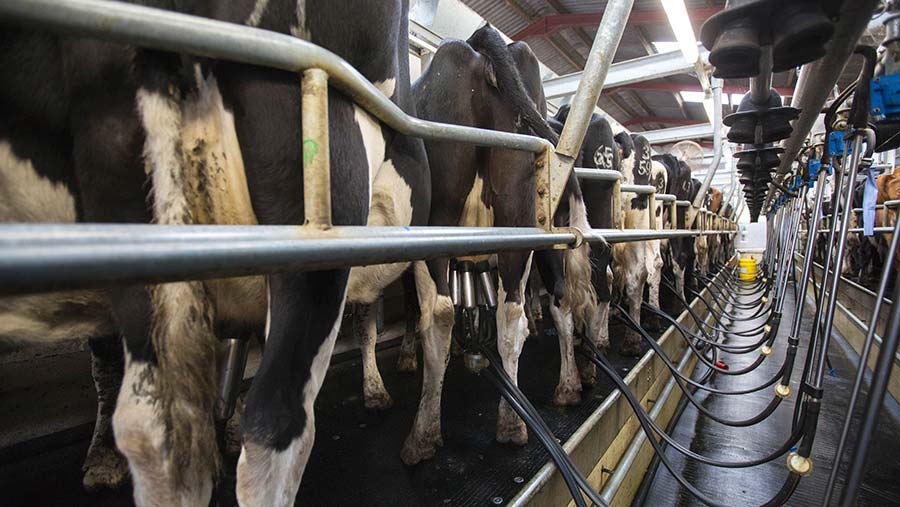Average dairy herd size drops – but milk keeps flowing
 © Tim Scrivener
© Tim Scrivener The average size of a dairy herd in the UK fell last year for the first time this century after farmers increased culling rates in response to the prolonged dry weather.
Fresh analysis of almost 2,000 herds by dairy consultancy firm Kingshay revealed the average number of cows on a dairy farm in the year ending March 2019 was 205, back by three compared with the previous 12 months.
This is the first time there has been a drop since 2000 (when the average herd size was 118), after culling rates rose by 2% to 29%, as farmers trimmed numbers to cope with forage deficits.
See also: Guide to using Johne’s test to cull in dairy herds
The report reveals the increasing influence the largest dairy businesses have on total UK milk production, with numbers of cattle in the biggest herds bucking the overall trend and continuing to grow.
The 60 herds on their books that annually produce more than 5m litres of milk put on an average of 17 additional cows last year and contributed 14% of total UK milk sales.
“Higher-output herds are less reliant on grazing, so the summer drought had less of a negative impact than in lower-output herds,” said Kathryn Rowland, senior farm services manager at Kingshay.
Their contribution helped the average yield a cow rise from 8,172 litres to 8,352 litres in the most recent set of results, despite the dry conditions in summer 2018.
The largest producers also tend to benefit from a more stable milk price and greater efficiency savings, she explained, which allowed them to make a margin of £2,120 a cow compared with £1,287 for herds producing up to 0.5m litres/year.
Kingshay warned there are still significant savings to be made for many producers by reducing cattle health problems.
The 25% of farms that saw the lowest incidence rates of common complaints such as mastitis, lameness, milk fever and calving problems made savings of more than £13,000 for every 100 cows compared with the sample as a whole.
An additional saving of £13,500 per 100 cows was seen by being in the top 25% for fertility.
